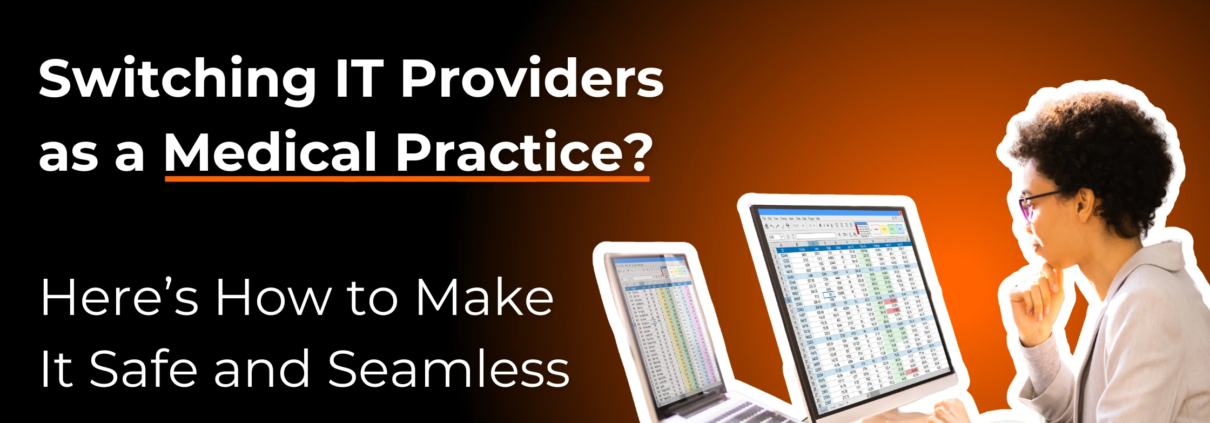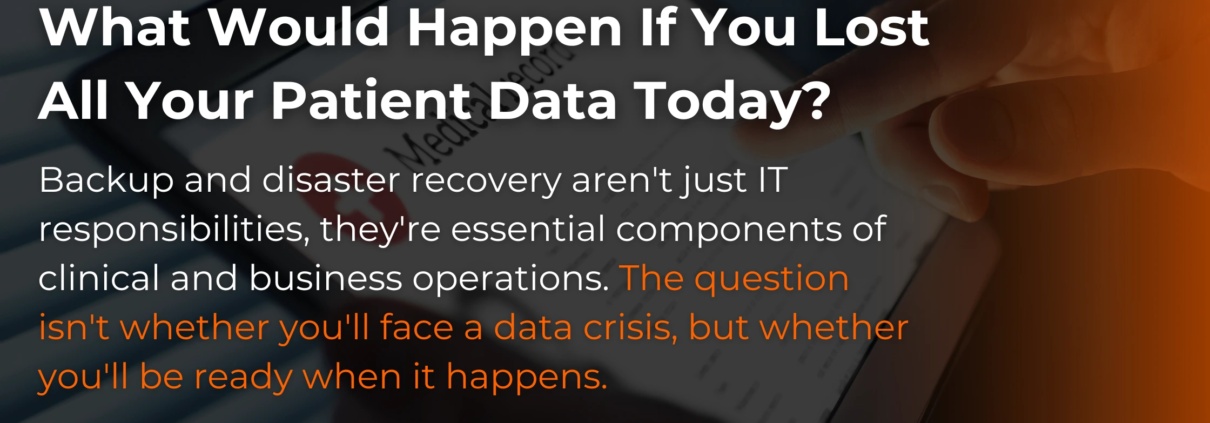Switching IT Providers as a Medical Practice? Here’s How to Make It Safe and Seamless
Switching IT providers probably isn’t at the top of your to-do list. Especially if you’re running a busy medical practice where even a minor disruption can impact patient care.
But here’s the reality: if your current IT setup is holding you back, waiting might be riskier than making the switch.
In this post, we’ll walk you through how to change IT providers safely, how to protect your team and your patients during the transition, and what to expect when you work with a partner like SYSTEMSEVEN.
Why Practices Avoid Switching and What’s Really at Stake
For most medical organizations, the idea of switching IT providers brings up some real fears:
- Will we lose access to patient records?
- Will our systems go down during the switch?
- Will we fall out of HIPAA compliance?
- Will our team be overwhelmed by a complicated process?
These are valid concerns. Healthcare environments are fast paced, heavily regulated, and deeply reliant on technology. One wrong move could lead to downtime, data breaches, or compliance violations.
But here’s the thing: staying with an underperforming or unresponsive IT provider isn’t without risk either.
You may be dealing with:
- Delayed ticket responses
- Inconsistent cybersecurity protections
- Repetitive system outages or access issues
- Poor documentation and lack of visibility
And while the pain may be slow and subtle, over time, it drains productivity, morale, and patient trust.
A Safe Switch Starts with the Right Partner
You don’t have to accept poor IT support just because switching sounds hard. With the right approach and the right team, it can be safe, smooth, and even empowering.
At SYSTEMSEVEN, we’ve built our onboarding process around medical practices. We don’t take over with disruption or judgment. We walk beside you with empathy and structure.
What Makes Switching Feel Risky and How We Solve It
Let’s break down the biggest fears and how SYSTEMSEVEN addresses them:
Fear: Losing Access to Patient Data
Our Fix: We audit, validate, and document every system and backup before anything changes. Your data stays protected, available, and compliant.
Fear: Downtime During the Transition
Our Fix: We design the cutover together, schedule it around your operations, and stay onsite and online to ensure a smooth handoff.
Fear: HIPAA or Security Lapses
Our Fix: We map every part of your tech stack to HIPAA controls. That includes data encryption, retention policies, access management, and user-level training.
Fear: Overwhelming Your Team
Our Fix: We start with a kick-off meeting, build a communication plan, and train your staff at a pace that fits your workflow. No surprise changes. No tech talk.
Why You Should Care: The Hidden Cost of Staying Put
Here’s the part that’s easy to overlook.
You might be tolerating IT that’s just good enough, but it’s costing you.
- Every repeated ticket is time lost for your staff
- Every undocumented system is a risk waiting to happen
- Every delayed response chips away at team trust
And when you’re in healthcare, the stakes are even higher. One missed backup or one misconfigured setting can have patient safety implications.
According to a recent survey, 70% of healthcare organizations say fear of disruption is the main reason they delay switching IT providers, even when they know it’s time.
What to Expect When You Onboard With SYSTEMSEVEN
Our onboarding process is built for safety, clarity, and care. Here’s what it looks like:
1. Team Kickoff
We meet with you and your key stakeholders to align on priorities, processes, and people.
2. Environment Documentation
We audit and document your:
- Hardware and software
- Networks and systems
- User roles and access levels
- Backup processes and disaster recovery plans
3. Security Review
We validate encryption, access protocols, and retention settings. We don’t guess. We confirm.
4. Go-Live Support
We’re there on-site and remotely when the switch happens. That means your team always has a lifeline.
5. Team Training
We walk your staff through what’s changing, why it matters, and how to use your new tools confidently.
6. Long-Term Roadmap
We’re not done at go live. We’ll work with you on compliance readiness, process improvements, and future planning.
Signs It’s Time to Switch
Still unsure whether it’s time to make a change? Here are some red flags:
- Tickets keep reappearing with no root cause resolved
- Your team is doing more IT troubleshooting than your provider
- You have no visibility into cybersecurity or compliance posture
- New systems and tools are always promised but never delivered
If any of that sounds familiar, your IT provider might be reactive, not strategic. That’s not enough for a medical organization.
Why SYSTEMSEVEN?
We specialize in sensitive transitions. From HIPAA compliance to business continuity, we understand what’s at stake.
- We don’t tear down what came before. We improve it.
- We support both the technical side and the people side.
- We move at a pace that protects your operations.
- We train your team, validate your systems, and phase changes.
Our goal is to help you build a stronger foundation without the stress. We treat onboarding like the beginning of a long-term relationship, not just a project.
Let’s Make the First Step Easy
If switching IT providers feels overwhelming, that’s OK. We’re here to help you explore what a safer, simpler option could look like.
Let’s talk about your current setup and what it would take to make a change. No pressure. No jargon. Just a helpful conversation.
Talk to SYSTEMSEVEN and let’s make tech easier, together.


